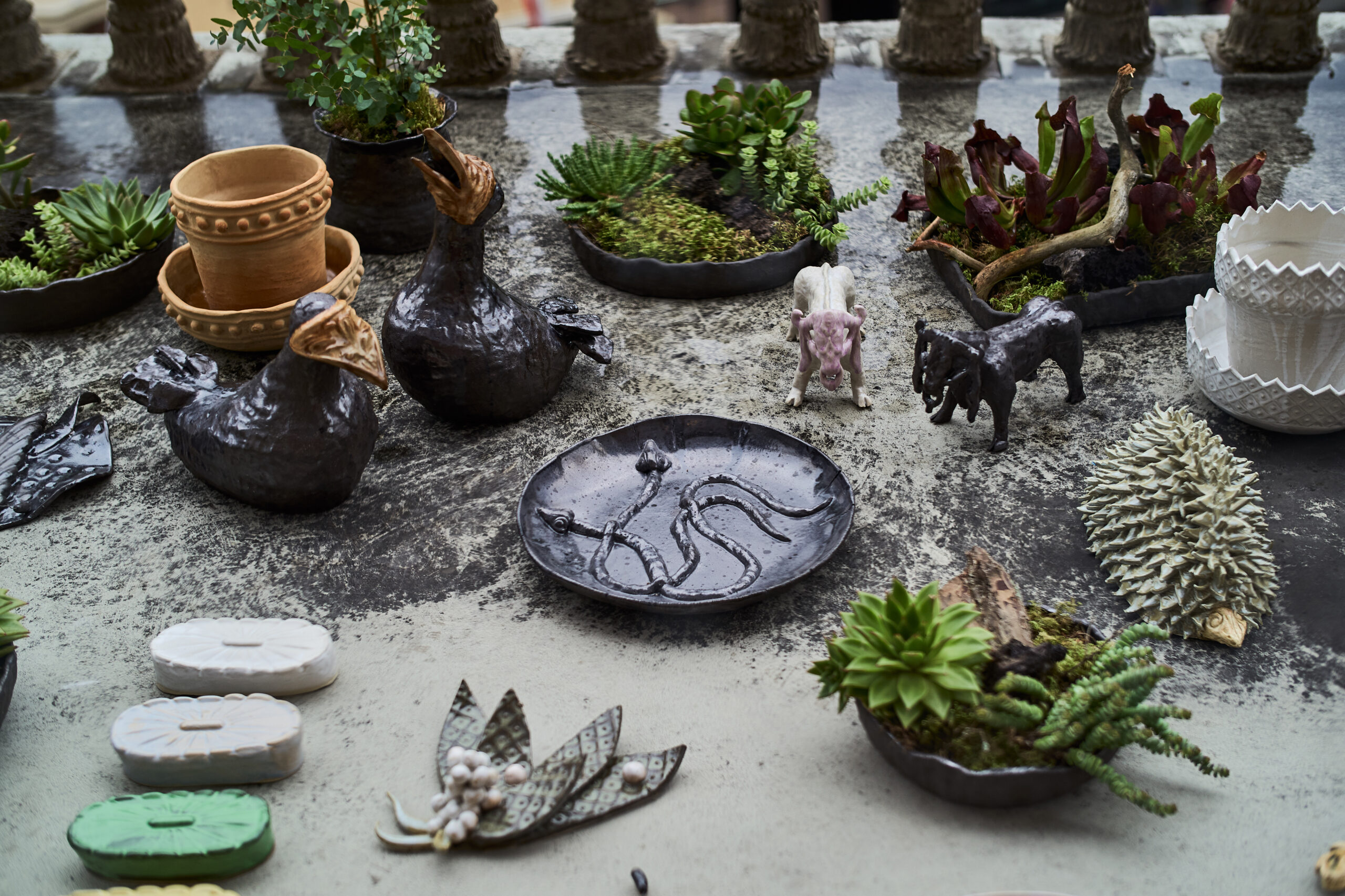What we learnt 2019 – Helsinki Design Week takes sustainability further

There is no doubt that climate catastrophe affects the society as a whole. Everyone is responsible for taking actions towards a better future. But what could Helsinki Design week do in terms of sustainability when the core of its operations, an event is in fact dispensable in nature?
There is no doubt that climate catastrophe affects the society as a whole. Everyone is responsible for taking actions towards a better future. But what could Helsinki Design week do in terms of sustainability when the core of its operations, an event is in fact dispensable in nature?
Programme Director Anni Korkman is tired. The 2019 Helsinki Design Week has been a tremendous success during two grandiose weeks of design, fashion, architecture and urban culture. “We are very proud of the festival and how far we have come in terms of sustainability but are determined to find ways of doing more”, Korkman says.
Helsinki Design Week has been active in taking to concrete solutions in order to fight climate change. According to Korkman the actions run on two separate levels. Those related to production and those that involve the content of the festival.

Production-wise the festival only uses recycled or completely recyclable materials from tickets to wall structures and encourages all Open Call event organisers to do the same. The festival only caters vegetarian food at all of its events and is committed to doing so in the future. All cups used at Helsinki Design Week are plastic-free and additionally, all tableware and cutlery are recyclable.

The commitment to sustainability also sits tight in the content of the festival. The 2019 programme featured several climate-minded events. The exhibition ensemble Designs for a Cooler Planet presented the New Silk project, looking at producing new, more sustainable materials in the future by studying spiders’ ways of creating materials. A natural indigo workshop explored ways of replacing synthetic textile dyes sustainably and ethically using Dyer’s woad – a non-toxic Finnish blue dye. The Climate School took over the whole City Hall!

Children’s week took serious manners and put an adventurous spin on it while brainstorming to make the world better. Children were invited to join the quest at Annantalo to ponder which phenomena are a threat to our future and which innovations will make the world a better place.

Open Call events tackled the climate crisis, too. The Critical Tide exhibition which explores the sea and the potential for positive impact through design and included the Department of Seaweed laboratory. The Shitty Time Machine invited participants to sit down and imagine what a future could be like to illustrate that we, at this point, have endless possibilities for the future ahead of us!
An ongoing fight needs active measures
This year’s event was part of the My Helsinki’s Think Sustainably service which promotes a better way of life – for everyone. The service which can be found on the MyHelsinki website, scores local businesses and service providers against a sustainability criteria.

The criteria drafted by My Helsinki and Demos Helsinki determines a 17-point maximum score for all events held in the city. Organisers presented by the Think Sustainably service fulfil at least eight of them. The criteria is divided under a set of three principles: Energy use, Social sustainability and Other which includes questions such as the use of disposable crockery and cutlery at the event, ability to provide water fountains and effects of the event on surrounding green spaces. Korkman is happy to announce that Helsinki Design Week now scores a pretty decent 11.

All the while the fight goes on. According to Korkman, the 2020 event will continue taking steps towards a better future by finding ways for international guests to avoid arriving by plane and by encouraging visitors to either walk, use public transport or bike when travelling to the festival. For the next year’s event, the festival will produce a sustainable event organiser’s checklist for all attendees at the Open Call events.
It also continues to fight the philosophical issue of being an event – something which is disposable in nature, by making it as sustainably as possible. This means keeping the festival alive all year round through Helsinki Design Weekly, co-operating with third parties and even hosting its own radio show. Showing that temporary does not equal disposable but rather, through hard work and commitment, something of highly sustainable value.